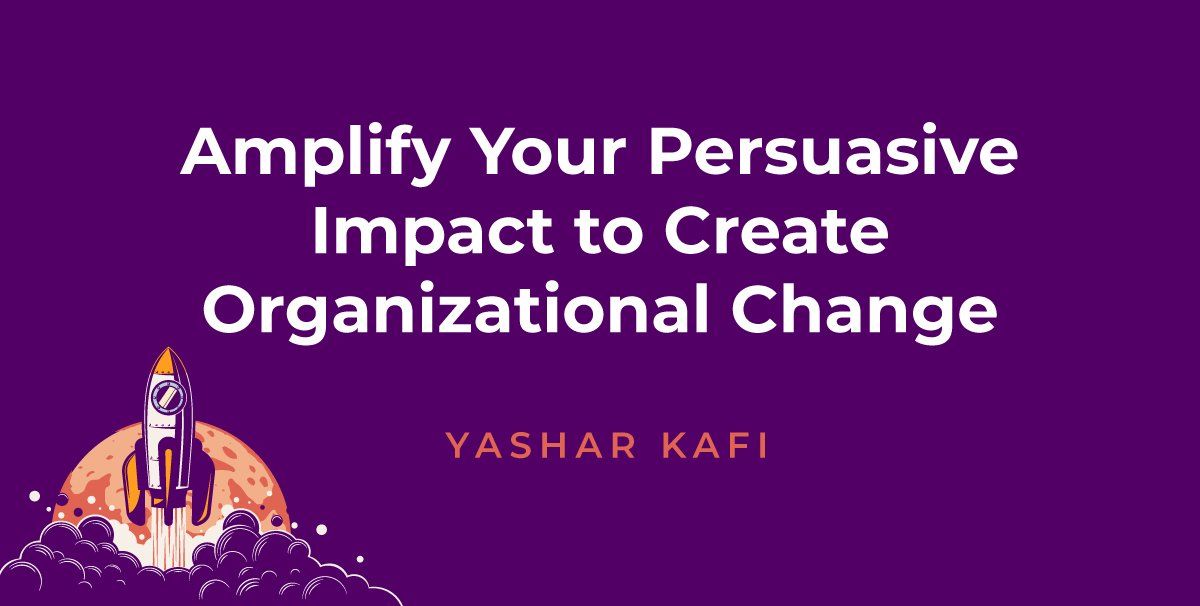Amplify Your Persuasive Impact to Create Organizational Change
There’s a course at Stanford University entitled “Amplify Your Persuasive Impact.” The aim is to “explore the science of effective persuasion and help you develop strategies to leverage that science, [as well as ] learn how to exert positive influence in any environment – in your organization, in a sales pitch, in the marketplace, or even at home.”
Sounds impressive, right? The course ties well into consulting as active listening and persuasion are part of the day-to-day. So, how can you use them to influence organizational change in your own operations?
Why Do We Need Organizational Change?
Organizational change is vital for companies to succeed and grow. Adequate change management practices fuel the successful adoption and ease of integrating change within an operation. When organizational change is done well, the process allows employees to understand and adapt to the new and shifting circumstances while still working effectively during the transition.
I like to think of it as managed chaos, where any change poses a disruption of sorts to the status quo. The good news is that great leaders can not only navigate the sometimes rough and turbulent waters of seasons of change well, but they can create magic on the other side of the shakeup—without abandoning the ship en route.
Organizational change addresses everything from the handling of mergers and acquisitions to dealing with the Great Resignation and even encompasses adopting a greater emphasis on mental health and getting rid of old-fashioned, outdated business tactics.
How to Utilize the Psychology Behind Persuasion
We live in a world filled with persuasion tools at play. These tactics swirl around us every day, from advertisements on billboards and our TV or computer to movie trailers plugging the next big flick. But persuasion is not just for marketers and salespeople, as persuasive techniques are also a goldmine for negotiating everything from mergers to acquisitions and beyond. You can even use persuasion to convince your boss to finally give you that well-deserved raise.
How? By utilizing the psychology behind persuasion. In the early 20th century, social psychologists began studying this powerful technique of getting what you want. The science behind it was full of insight, including how creating the idea of a need in the person we are trying to persuade works wonders in “winning” our case, as well as does appealing to social needs, using loaded images and ideals, using the technique of reciprocity (you scratch my back; I’ll scratch yours), and many more.
There are many ways to get there, but the bottom line is that the psychology behind persuasion is to use whatever Jedi mind tricks at your disposal to make your subjects want what you want.
Applying Persuasion to Organizations Resisting Change
While getting people on board and convincing them to want what you want isn’t always easy, there are ways to apply persuasion to every situation, including organizations resisting change. So, what can you do with the resisters? A Harvard Business Review article addresses this subject specifically and offers excellent insights.
According to the article, you have to use persuasion to show how your changes will make a marked improvement from the past: “Like a political campaign, a persuasion campaign is largely one of differentiation from the past. To the typical change-averse employee, all restructuring plans look alike. The trick for turnaround leaders is to show employees precisely how their plans differ from their predecessors.” They must convince people that the organization is truly on its deathbed—or, at the very least, that radical changes are required if it is to survive and thrive.”
Are you ready to amplify your persuasive impact to realize significant change? Connect with us to learn more.




